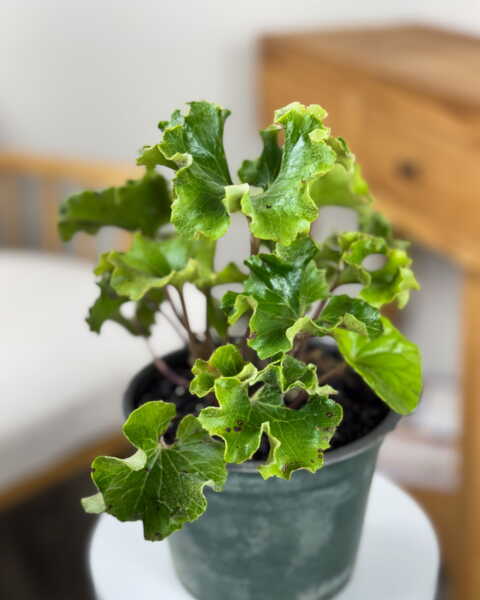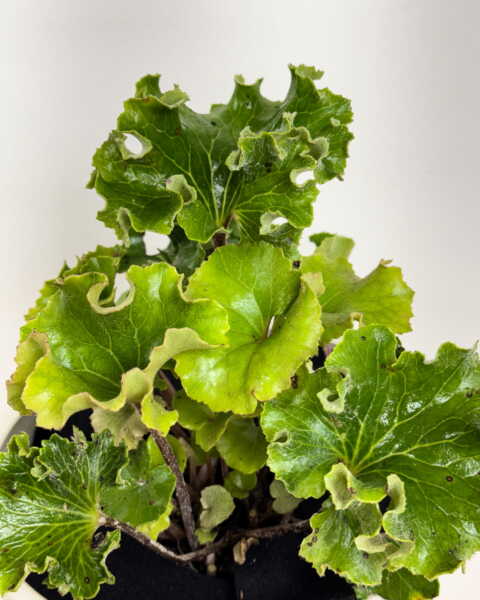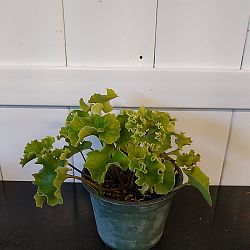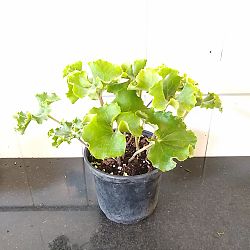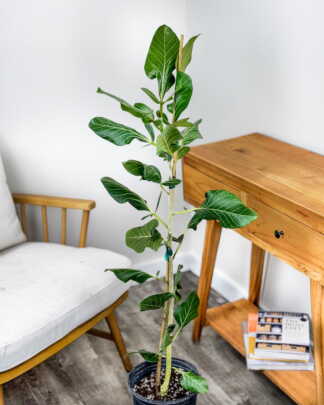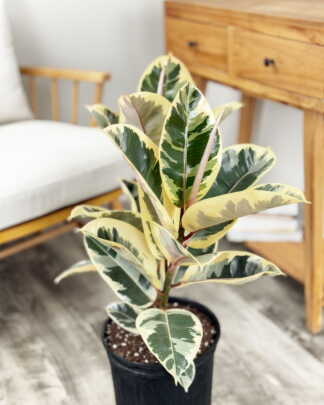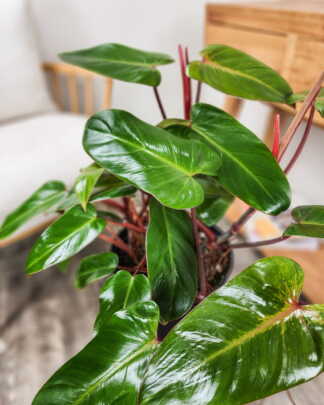Description
Caring for your Crested Leopard Plant
With its distinctive ruffled leaves and cheerful autumn flowers, Farfugium japonicum ‘Crispatum’ is a delightful addition to any garden or indoor plant collection. By providing the right light, soil, and moisture conditions, along with proper care and maintenance, you can enjoy the lush beauty of this plant year-round. Its adaptability and relatively low-maintenance nature make it a favorite among plant enthusiasts seeking to add a touch of exotic flair to their greenery.
Light
Farfugium japonicum ‘Crispatum’ thrives best in partial to full shade. It is an excellent choice for areas that receive filtered sunlight or dappled shade. Direct sunlight, especially in the intense midday hours, can scorch its leaves and lead to wilting. If you are growing it indoors, place it near a north or east-facing window where it can receive bright, indirect light.
Soil
This plant prefers consistently moist, well-draining soil. A loamy soil enriched with organic matter is ideal for retaining moisture while allowing excess water to drain away. Ensure the soil pH is slightly acidic to neutral (pH 6.0-7.0). When planting in containers, use a high-quality potting mix with added compost or peat to improve moisture retention.
Water
Consistent moisture is key for Farfugium japonicum ‘Crispatum.’ Water the plant regularly to keep the soil evenly moist, but not waterlogged. During the growing season (spring to autumn), water thoroughly whenever the top inch of soil feels dry. Reduce watering frequency in the winter months when the plant’s growth slows down. Inadequate watering can cause the leaves to droop and become dry, while overwatering can lead to root rot.
This plant prefers a humid environment, mimicking its native habitat. Indoor plants benefit from regular misting or placing a humidity tray filled with water and pebbles underneath the pot. Using a humidifier in the room can also help maintain the necessary humidity levels, especially during the dry winter months.
Temperature
Farfugium japonicum ‘Crispatum’ thrives in temperatures between 50°F to 75°F (10°C to 24°C). It is sensitive to extreme cold and should be protected from frost. In regions with harsh winters, it’s best grown as a container plant that can be moved indoors during the colder months. Avoid placing it near drafty windows or air conditioning vents, as sudden temperature changes can stress the plant.
Fertilization
To encourage healthy growth and vibrant foliage, fertilize Farfugium japonicum ‘Crispatum’ during the growing season. Use a balanced, water-soluble fertilizer every four to six weeks from spring through early autumn. Alternatively, a slow-release granular fertilizer applied in spring can provide steady nutrients throughout the growing season. Reduce or stop fertilizing in the winter when the plant is dormant.
Pruning and Maintenance
Pruning is not typically necessary for Farfugium japonicum ‘Crispatum,’ but occasional maintenance can help keep the plant looking its best. Remove any dead or damaged leaves to encourage new growth and improve air circulation. After the flowering period, cut back spent flower stalks to maintain the plant’s appearance.
Pest and Disease Management
Farfugium japonicum ‘Crispatum’ is relatively pest-resistant, but it can occasionally be affected by aphids, slugs, and snails. Regularly inspect the plant for signs of pests, such as holes in the leaves or sticky residue. Use insecticidal soap or neem oil to treat aphid infestations. For slugs and snails, use organic slug pellets or hand-pick them off the plant.
The plant can be susceptible to fungal diseases like powdery mildew and root rot, particularly in overly wet conditions. Ensure good air circulation and avoid overhead watering to prevent fungal issues. If root rot is suspected, reduce watering and improve soil drainage.
Propagation
Farfugium japonicum ‘Crispatum’ can be propagated by division or seed. The easiest method is division, which should be done in spring or early autumn. Carefully lift the plant from the soil and separate the root clumps, ensuring each division has a healthy root system and a few leaves. Replant the divisions in fresh soil and water thoroughly.

